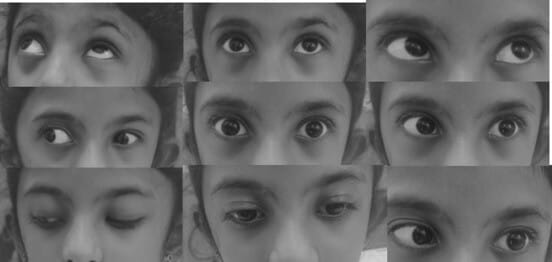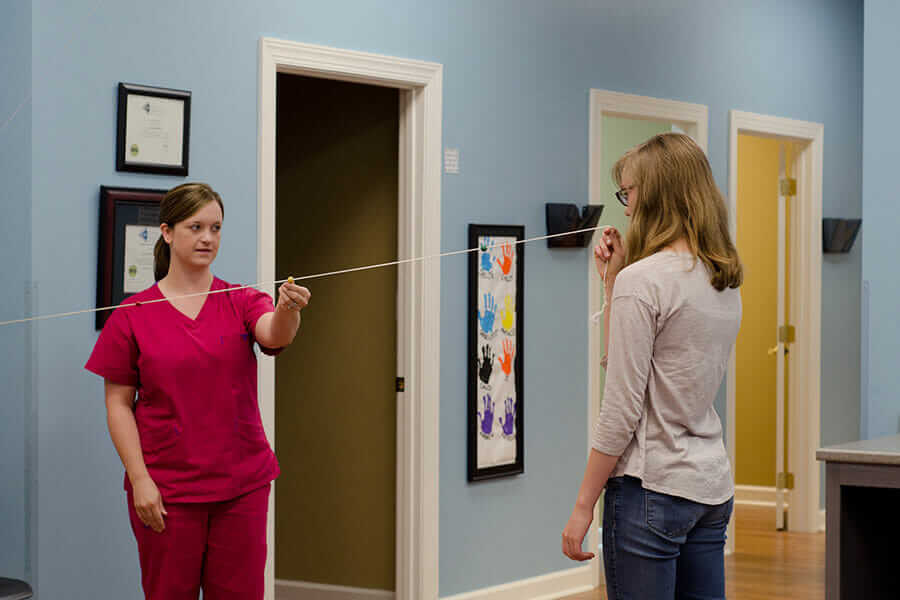Treatment of Duane Syndrome
Duane syndrome is a type of strabismus where there is a limitation in eye movement, often causing the eyes to appear misaligned. Traditional treatments like eyeglasses may not adequately address the complexities of this condition, making vision therapy combined with surgery when appropriate the ideal treatment.
As there is no means to repair or replace the affected sixth cranial nerve causing duane syndrome, a complete cure remains elusive. However, there can be significant improvement to posture and functional vision with the use of surgery, prism lenses, and vision therapy, with many patients combining these approaches to achieve best results.
Surgery for Duane Syndrome
Surgery is one of the most common treatments for duane syndrome. The goal of surgery is to improve the eye's alignment and increase the range of motion. This can reduce or eliminate the need for frequent head turns to see clearly. However, surgery might not fully correct the condition or restore normal eye movement. Surgical options may include:
Recession: Loosening the affected muscle to allow more freedom of movement.
Resection: Tightening the opposite muscle to balance the eye's movement.
Risks include scarring, over-correction, or under-correction. Furthermore surgery alone in many cases does not acheive best vision as the patients missaligned eye has not been reintroduced into the binocular vision system (both eyes working together in a coordinated fashion). It's essential to discuss your specific case with your eye doctor to see if surgery is suitable for you.
Vision Therapy or Neuro Optometric Rehabilitation
Vision therapy and neuro optometric rehabilitation offer a targeted approach for treating duane syndrome, which is often used alongside surgical interventions.
The goal of vision therapy and neuro optometry is to develop better binocular vision, where both eyes work in harmony. A variety of tailored exercises aim to enhance eye coordination, muscle control, and visual processing skills. It works to repair the connection between the eyes and the brain, which is often compromised in cases of duane syndrome. For those with duane syndrome, vision therapy can be particularly effective in mitigating symptoms, improving visual function and improving the results of surgery alone.
Prism lenses can also play a role in neuro optometry and vision therapy treatment programs for duane syndrome. These special lenses are designed to shift the image seen by each eye, making it easier for the brain to merge these images into one. While they won't cure Duane Syndrome, they can significantly reduce symptoms like eye strain and double vision.
Prism lenses are often employed as a less invasive treatment choice, either on their own or in conjunction with vision therapy or neuro optometric rehabilitation to enhance the efficacy of therapy. By helping the eyes work together more effectively, they offer another avenue for symptom relief and improved quality of life.
Combining Vision Therapy and Surgery
For many patients, a combination of vision therapy/neuro optometry and surgery provides the best results. Even after the eyes are straightened through surgery, the visual system has not been taught how to properly use both eyes together, which is called binocular vision. By training the visual system properly patients will oftentimes have a dramatic improvement in vision when compared to surgery alone. Vision therapy can help prepare the eye for surgery and improve outcomes or vision therapy can take place after surgery to improve success.
It's essential to consult a functional optometrist or neuro optometrist for a comprehensive diagnosis and tailored treatment plan. Depending on the severity of your condition and your lifestyle, a combination of these treatments may offer the best chance for improved vision and comfort.





















